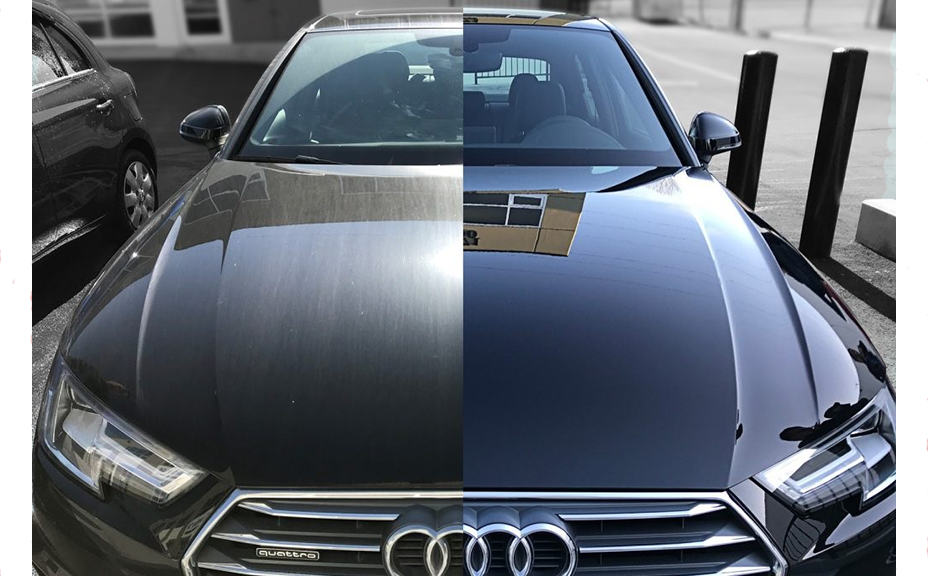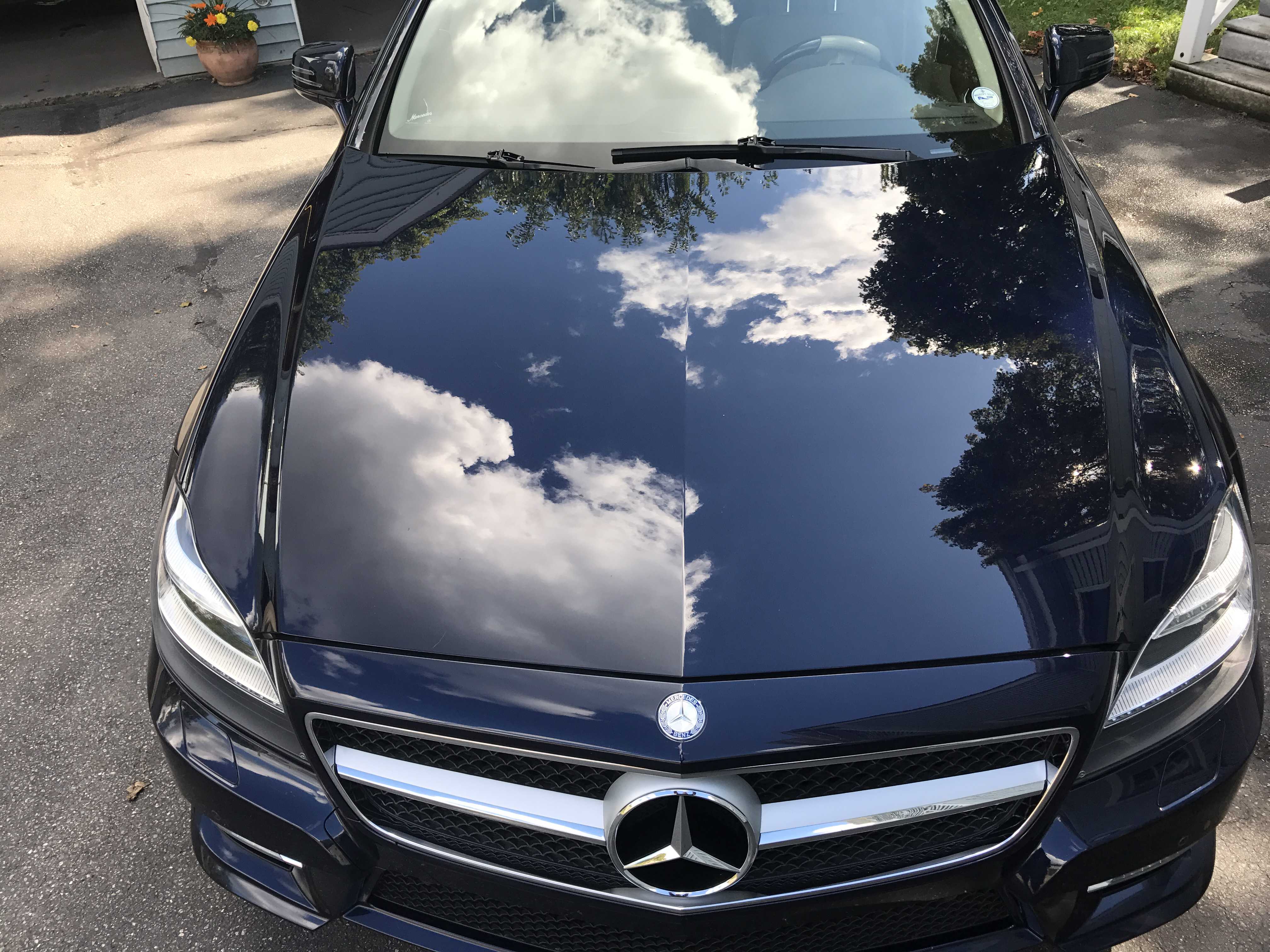How Ceramic Coating Newark can upgrade your vehicle’s look instantly
Exploring the Science Behind Car Ceramic Coating and Its Safety Qualities
The science of car ceramic coating presents a fascinating research in sophisticated automobile defense. Made up largely of silicon dioxide and polymers, these layers form a robust bond with automobile paint. This interaction improves durability against ecological hazards while providing hydrophobic benefits. However, the intricacies of exactly how these coverings job and their lasting benefits continue to be less comprehended. Unloading these details exposes why ceramic coverings are becoming a recommended choice for car treatment
What Is Ceramic Coating?
Ceramic coating is a fluid polymer that chemically bonds to the surface area of an automobile's paint. This sophisticated safety layer enhances longevity and uses remarkable resistance to ecological variables. Unlike typical wax or sealers, which provide momentary defense, ceramic finishings develop a resilient guard that can withstand rough problems such as UV rays, acidic contaminants, and severe weather. When applied properly, the coating develops a hydrophobic surface area, triggering water to bead and slide off, which aids in keeping the lorry's cleanliness. Furthermore, it uses enhanced gloss and deepness to the paint, making the vehicle show up even more refined and vivid. The application procedure commonly includes complete surface preparation, consisting of cleansing and sprucing up, to guarantee peak bonding. Because of this, ceramic finishings are becoming significantly popular among car fanatics and those looking for to safeguard their investments, promising to keep the vehicle's aesthetic allure while lowering the frequency of upkeep.
The Structure of Ceramic Coatings
The detailed solution of ceramic coverings primarily is composed of silicon dioxide (SiO2), which is stemmed from natural sources like quartz and sand. This crucial component offers the foundation for the coating's durability and protective high qualities. In enhancement to SiO2, ceramic finishes commonly consist of numerous polymers and additives that improve adhesion, adaptability, and resistance to ecological elements. These substances function synergistically to produce a robust obstacle versus impurities such as dirt, chemicals, and UV rays.Furthermore, some solutions integrate titanium dioxide (TiO2) or other nanomaterials, which can augment the coating's hydrophobic homes, leading to improved water repellency. The exact make-up can vary substantially among makers, affecting performance and longevity. Inevitably, the combination of these aspects culminates in a protective layer that not only improves the aesthetic charm of lorries however also serves to lengthen their life-span by shielding the surface area from potential damages.
Exactly How Ceramic Coatings Job
Understanding exactly how ceramic finishings function includes exploring their chemical composition, which contributes to their safety top qualities. The application process is vital for attaining optimal outcomes, while durability and sturdiness aspects figure out the coating's effectiveness in time. With each other, these elements highlight the benefits and performance of ceramic finishes for car defense.
Chemical Structure Explained
While several car owners seek resilient security for their vehicles, the chemical structure of ceramic finishes plays a vital function in their effectiveness. These finishes largely contain silicon dioxide (SiO2), which is originated from all-natural minerals. This substance creates a strong bond with the car's paint, developing a durable, protective layer. Additionally, lots of ceramic coverings have titanium dioxide (TiO2), improving their hydrophobic residential properties and resistance to UV rays. The existence of polysiloxanes can even more improve adaptability and durability. With each other, these components contribute to the coating's capacity to ward off water, dust, and contaminants, while additionally supplying a high-gloss coating. Understanding this chemical foundation assists car owners value the robust security used by ceramic finishings.
Application Process Review
Using ceramic finishes includes a thorough process that assures ideal bonding and protection for the lorry's surface. Comprehensive cleaning and purification of the car's outside are carried out to get rid of dust, gunk, and previous waxes. This step validates that the surface area is totally free from pollutants that might prevent adhesion. Following this, the paint is typically polished to boost clarity and eliminate any type of blemishes. Once prepared, the ceramic coating is used in little sections making use of an applicator pad, enabling consistent coverage. The coating is after that entrusted to treat, forming a strong chemical bond with the surface area. Proper curing times and conditions are crucial, as they verify the coating attains its maximum efficiency and protective qualities.
Long Life and Durability Factors
Ceramic finishings are made to provide resilient security with their innovative chemical composition, which develops a robust barrier versus environmental impurities. The sturdiness of these coatings is influenced by factors such as the density of the application, the quality of the item, and the problems under which the vehicle is exposed. High-quality ceramic finishes can last numerous years, standing up to scrapes, UV rays, and chemical spots. Proper upkeep, including regular cleaning and periodic reapplication, can further boost longevity. Furthermore, environmental factors like environment and exposure to contaminants can affect the lifespan of the coating. In general, when used and preserved properly, ceramic finishes use exceptional longevity, making them a preferred choice for car lovers seeking to protect their vehicle's appearance.
Hydrophobic Features and Water Repellency
Hydrophobic residential or commercial properties are a trademark of high quality car ceramic layers, considerably improving the automobile's surface area performance. These finishes produce a molecular bond with the car's paint, leading to a surface that repels water effectively. When water comes into contact with a ceramic-coated surface, it beads up and rolls next off, decreasing the amount of liquid that continues to be on the paint. This habits not just adds to an aesthetically pleasing appearance yet also minimizes the buildup of contaminants such as dirt, crud, and roadway salts.The enhanced water repellency results in simpler cleaning and upkeep, as much less effort is required to eliminate unwanted materials. On top of that, the hydrophobic nature of ceramic layers assists in preventing water places, which can mar the coating of uncoated surface areas. In general, the consolidation of hydrophobic properties in ceramic coverings plays a vital role in keeping the car's pristine look while streamlining maintenance.
Defense Against Scratches and UV Damages
Car ceramic layers use significant security versus scrapes and UV damage. The scrape resistance device creates a durable layer that absorbs effects, while redirected here the UV protecting benefits help maintain the car's paint honesty with time. Together, these attributes add to a longer-lasting and visually enticing finish.
Scrape Resistance Mechanism
Making use of sophisticated innovation, ceramic coatings provide a durable shield versus scratches and UV damages, enhancing the longevity and look of vehicle surfaces. The scratch resistance device of these coverings is connected to their distinct molecular framework, which forms a resilient bond with the automobile's paint. This bond develops a hard, safety layer that can take in influences and stand up to abrasions. Additionally, the smooth surface area of the coating lowers friction, making it difficult for impurities to stick and create scratches. The chemical composition of ceramic finishings usually consists of nanoparticles that enhance the safety layer, additional enhancing its durability. As a result, lorries treated with ceramic coverings exhibit noticeably boosted scrape resistance contrasted to traditional wax browse around this site or sealers, ensuring a beautiful surface with time.
UV Protecting Advantages
The protective qualities of ceramic finishings prolong past scratch resistance to consist of significant UV securing advantages. These finishings create a robust barrier that reflects damaging ultraviolet rays, securing the automobile's paint and underlying materials. Extended direct exposure to UV radiation can result in fading, oxidation, and damage of the paint coating. By incorporating ceramic coatings, automobile proprietors can properly alleviate these risks, protecting the aesthetic allure and integrity of their automobiles. Furthermore, the UV obstructing homes add to improved longevity, lowering the regularity of painting and maintenance. Inevitably, the integration of ceramic layers supplies an extensive service for safeguarding automobiles from the harmful impacts of sunlight exposure, making sure a sustained, vivid appearance over time.
The Durability and Upkeep of Ceramic Coatings

Regularly Asked Concerns
Can Porcelain Coating Be Applied to Any Kind Of Lorry?
Ceramic coating can be applied to numerous kinds of vehicles, consisting of automobiles, trucks, and bikes. Nevertheless, surface prep work and compatibility with certain products are necessary for optimal bond and performance of the coating.
How Much Does Ceramic Coating Normally Price?
Ceramic coating usually costs between $500 and $2,000, depending on elements such as lorry dimension, coating quality, and expert application. The investment can give resilient protection and improve the lorry's appearance gradually.

Is Specialist Application Needed for Best Outcomes?
The requirement of professional application often depends upon preferred results. Specialists commonly assure proper surface prep work and application techniques, resulting in ideal bonding and durability of the coating, which may be challenging for inexperienced people to attain.
Can Ceramic Coatings Be Removed or Repaired?
Ceramic layers can be eliminated or repaired, though the process may call for particular solvents or methods - Ceramic Coating Newark. Correct removal is vital to prevent damages to the underlying surface, highlighting the relevance of expert assistance for optimal outcomes
Exactly How Does Ceramic Coating Compare to Typical Wax?
The contrast in between ceramic coating and conventional wax reveals that ceramic finishes supply exceptional toughness, improved protection against ecological impurities, and longer-lasting sparkle, while wax requires more constant application and supplies less overall resistance to damage.